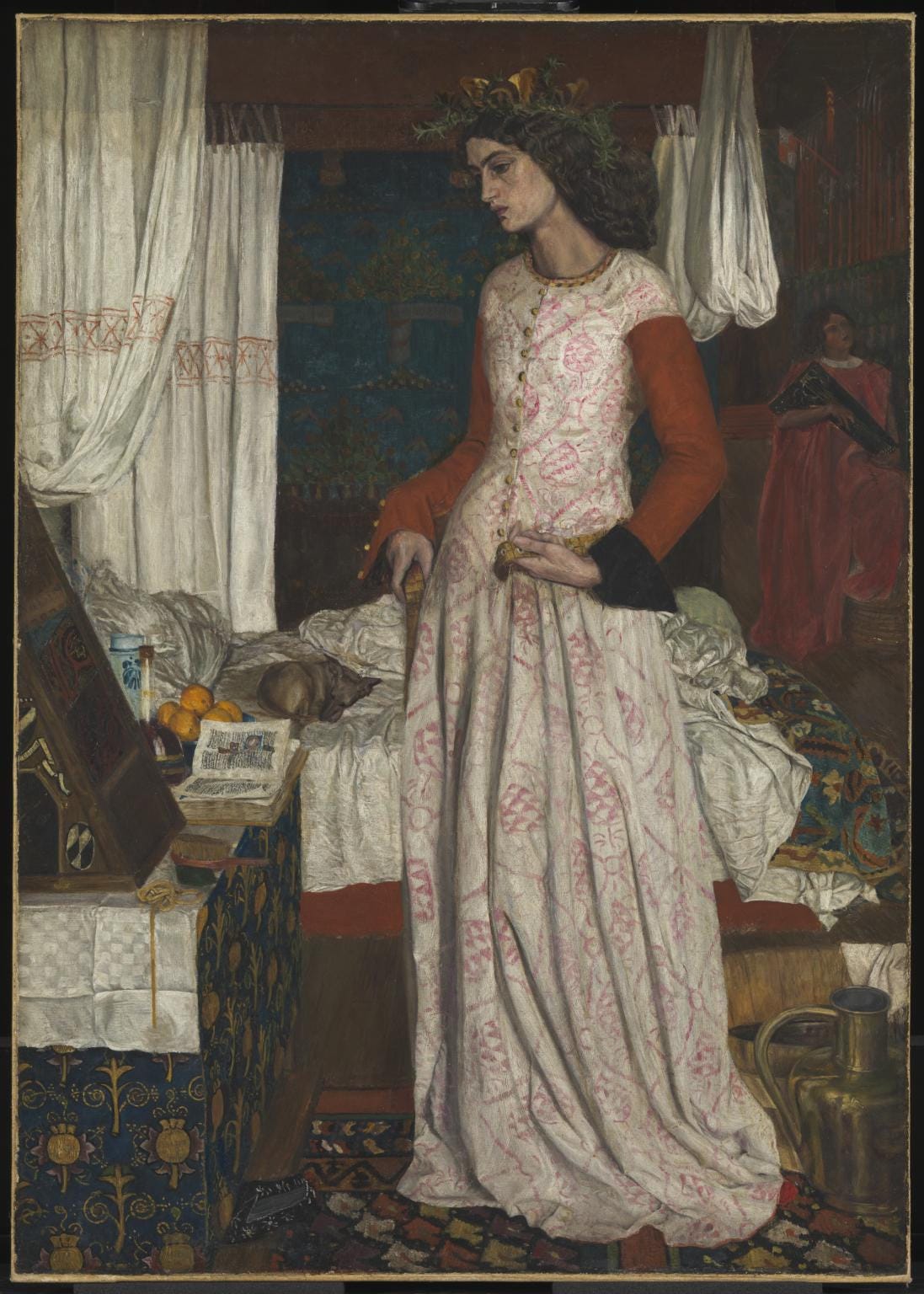When I embarked on the journey to name this digital hangout, my design and marketing instincts kicked into high gear. I dove headfirst into an exhilarating challenge that was so much more than just picking a name; it felt like crafting an entire brand from the ground up. I could already picture the name soaring, the logo popping with creativity and a vibrant color palette that would bring it all together. The thrill of this process ignited a fire within me — this newsletter has become my ultimate creative playground, a space where I can unleash the skills I’ve nurtured over the years. It's not just a project; it's a burgeoning premise of evergreen possibility. Naturally, I threw myself into designing its look and feel, which has engorged me with blissful satisfaction, but I digress. I didn't start this newsletter (or writing, for that matter) for the sake of starting a brand. It's akin to trying to launch a skincare line from a marketing boardroom instead of a lab—*science matters*. Writing is cathartic for me; it's both a cherished pastime and a vital part of my survival, and I love it that way.
It's tempting to romanticize a newsletter title, though, and I battled through the usual clichés, from pen names to quirky wordplay to synonyms for 'dispatch' or 'gazette.' I didn't want something so niche that it boxed me in. But I also didn't want to overreach because, let's face it, I'm not an expert on everything. The challenge was to find a name that didn't limit its reach yet still reflected the core themes I wanted to explore.
After stewing on it for a couple of weeks, as much as I tried to dance around it, I took a leap of faith in a nom-de-guerre. Adopting a pseudonym allowed me to create a distinct identity for my work. While it may be a familiar concept, I found this exploration incredibly fulfilling. And so it began…
Though I only have one name—Isabel—a dear friend affectionately calls me 'Isolde' (you know who you are), which sparked my curiosity about how alluring and soulful it rolled off the tongue. Delving its meaning revealed some fascinating insights: Isolde boasts rich dual origins—Welsh and Germanic. In Welsh, it signifies 'She who is gazed upon' or 'Fair lady,' while in Germanic, it conjures the powerful imagery of 'Ice Ruler' or 'Ice Queen.' In my research, I also stumbled upon a famous medieval romance based on a Celtic legend: 'Tristan & Isolde,’ which you can find embedded next.
In a thrilling quest filled with adventure, the bold young Tristan journeys to the enchanting lands of Ireland, determined to win the heart of the beautiful Princess Isolde for his uncle, King Mark of Cornwall. After bravely slaying a fearsome dragon that has spread terror across the realm, Tristan triumphantly accomplishes his mission. However, fate has a twisted plan; during their perilous return journey, Tristan and Isolde unwittingly sip from a magical love potion, originally crafted by the queen to bind her daughter to King Mark. From that moment, an unbreakable bond ignites between them—an all-consuming passion that defies danger, embraces hardship, and yet strangely preserves their loyalty to the king.
Their secret love, however, does not go unnoticed. King Mark and his cunning courtiers plot to ensnare the star-crossed lovers. Time and again, Tristan and Isolde manage to evade capture, but eventually, Mark uncovers what he believes to be undeniable proof of their betrayal. As punishment looms near, Tristan performs a miraculous leap from a chapel perched on the cliffs, whisking Isolde away from the clutches of doom, just as Mark is about to hand her over to a gruesome band of lepers. They find refuge in the dense, mysterious forest of Morrois, but their happiness proves fleeting. One fateful day, Mark discovers them asleep together, a naked sword lying between them—an indelible symbol of their tumultuous love. In a bittersweet twist, they seek peace with the king, and Tristan reluctantly agrees to return Isolde to Mark and leave their homeland behind. As destiny unfolds, Tristan arrives in Brittany and marries Isolde of the White Hands, daughter of the duke, captivated only by her name and beauty. Yet, his heart remains tethered to his true love. Mortally wounded by a treacherous poisoned blade, he sends for the only one who can heal him—his beloved Isolde. A critical test unfolds as he instructs that if she chooses to come, her ship should sail with white sails; if she refuses, it will be black.
In a cruel twist of fate, his jealous wife discovers his secret. As the ship approaches, she deceitfully proclaims it carries black sails. Heartbroken, Tristan turns away, believing his love has forsaken him, and in that moment of despair, he breathes his last. When Isolde finally arrives, her heart shatters as she finds him gone, and in a tragic final embrace, she surrenders her life alongside him. Yet, from their entwined fates springs a miraculous tale: from their graves, two magnificent trees grow, their branches intertwined in an eternal embrace, forever united against the forces that sought to tear them apart.
Upon further scrutiny, I quickly realized that the story is a cautionary tale about the challenges of navigating love, desire, and duty. I made a list of positive and negative takeaways, and in doing so, the ethos of Café Isolde materialized right before my eyes:
❥ Love wields the power to connect individuals and inspire remarkable and profound creativity.
❥ It is crucial to live authentically, even when it means defying societal norms and expectations.
At the same time, this narrative serves as a stark warning:
❥ When passion is left unbridled, it results in destruction, with consequences far beyond the immediate circumstances.
❥ The clash between love and responsibility can induce significant turmoil, forcing us to make difficult choices that test our core values.
This duality made the storyline timeless because what is life if not a rigid dichotomy between heart and mind? It framed the space to celebrate the transformative beauty of creativity and storytelling while recognizing the complexities and duality of the human experience.
All this is to say that 'Isolde' fit the bill and quickly became a focal point in my Notes app. It was demanding my attention, and by the height of summer, it had transformed from a simple name on my screen into a rich collection of raw ideas, images, mood boards, and notes. Exploring its potential became unavoidable, and I took it a step further when I was led to a link to the Tate Museum's website that unveiled a captivating painting from 1858 by William Morris titled 'La Belle Iseult.' The caption read: 'In Tate Britain - Historic and Modern British Art: Beauty as Protest: 1845-1905.’ Nothing to see here.
Iseult seems to have recently gotten out of bed, where a small greyhound is curled up among the crumpled sheets. In Le Morte d'Arthur (c. 1470), the author, Sir Thomas Malory (c. 1405-71), notes that "the queen always had a little brachet [bitch-hound, a hunting dog] with her that Sir Tristan gave her the first time she came into Cornwall, and that brachet would never leave her unless Sir Tristan was nearby" (quoted in Banham and Harris, p. 115). She stands wistfully in her small chamber, her feelings for Tristan deepened by the rosemary sprigs—symbols of remembrance—in her crown and the word "DOLOURS" (grief) written along the side of her mirror.
You deserve to know that Kevin Reynolds adapted 'Tristan & Isolde' into a feature film in 2006. It's an epic romantic drama set in the Dark Ages, starring James Franco as Tristan, Sophia Myles as Isolde, and Henry Cavill as Melot in his younger acting days. You're welcome.
When I tacked on Café to Isolde, it wasn't just about aesthetics—it was about the atmosphere. Coffee shops aren't just places to get a caffeine fix; they're little universes of possibility. It's where strangers brush elbows, notebooks fill with big ideas, and deadlines somehow feel less oppressive under the hum of conversation and clinking mugs. A café is a breeding ground for creativity, collaboration, and eavesdropping on life's best unintentional dialogues. That is the vibe I'm channeling here—a space that feels alive with ideas but cozy enough for introspection. In Café Isolde, you can linger over words, take what you need, and leave inspired (no overpriced oat milk required).
To my dear friend Astrid, Thank you for providing me with a bottomless well of inspiration and creativity. Forever indebted to you. Isolde.










Welcome to Substack my friend! I'm delighted to read you. Fewer things I enjoy more than the discovery of a new cozy café.
☕️📠💜📥!